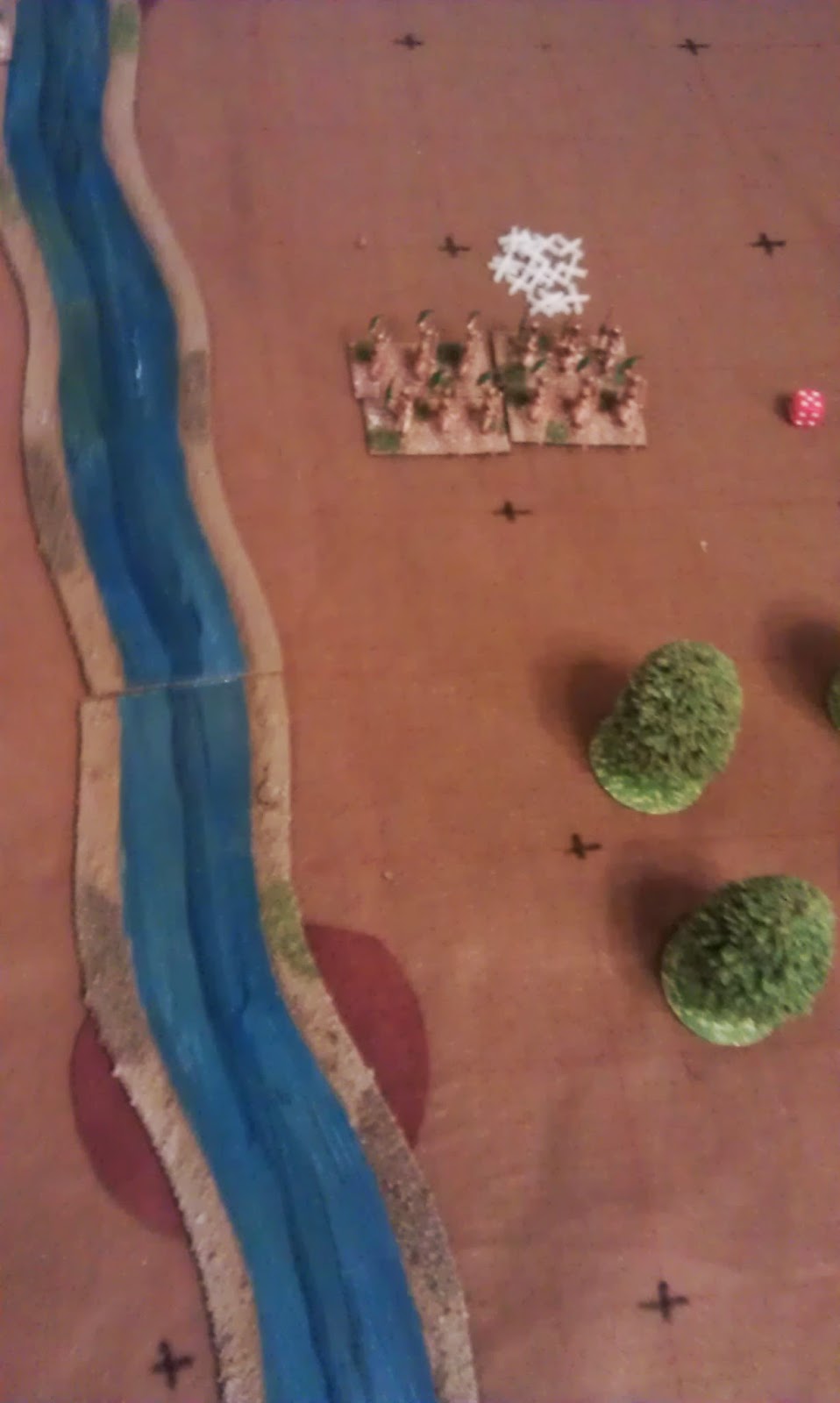Hello everyone and Happy New Year!
Apologies for the prolonged absence, real life just seemed too hectic to keep up with blogging. I've actually got a lot of articles in stock, it is just a question of summoning the energy to actually type the words to go with the pictures. Anyway, here's another go for 2015.
We've recently been pretty excited by the various wargames rules produced by Neil Thomas, nice easy games very suitable for a club night and not too hard on the brain cells. His most recent publication is 'One Hour Wargames' which does what it says on the tin, very quick wargames rules covering everything from Ancients to WW2 and 30 canned scenarios to go with them.
Our first try out was with the Ancients set, although I couldn't resist fiddling slightly with the troop types so the Romans get 'Auxilia' instead of Warband as a secondary type. This matchup is Romans vs Carthaginians, and the scenario is a contested river crossing with two fords. Victory goes to the side who captures both crossings.
 |
| Mighty Romans, four units of Legionaries, one cavalry and one Auxilia. |
 |
| Carthaginians, three heavy infantry, one warband and two light infantry. |
 |
| Roman cavary dash across the first ford in a heroic delaying action. |
 |
| Everyone else lines up menacingly opposite the other ford. |
 |
| Romans race to rescue the cavalry, who are having the worst of it |
 |
| But too late, the cavalry die leaving a sad pile of casualty markers behind. Units are destroyed when they take 15 hits. |
 |
| Carthos push across the ford to the south. |
 |
| And the Romans get stuck in at the other end. |
 |
| Losses mount |
 |
| And in the north |
 |
| But the Romans are finally victorious in the south |
 |
| While the bloodbath in the north continues |
 |
| The Romans from the south move to aid their comrades |
 |
| Arriving just in time |
 |
| And finally a hard won victory. |
This was really good fun. The rules were so simple you could focus on the tactical complications of the scenario. The cumulative damage model led to some nail biting engagements, and the small number of units meant commanders were forced to make real choices about commitment of forces in different sectors. The only real criticism were that the rules are so short for each period, that much is left unexplained (particularly wrt flank/rear attacks) and I ended up drawing guidance from his fuller rule sets as to the possible intention. We've also played the Napoleonic version and I adapted the WW1 set to use for the Spanish Civil War (which sadly I didn't take any photos of).
















No comments:
Post a Comment